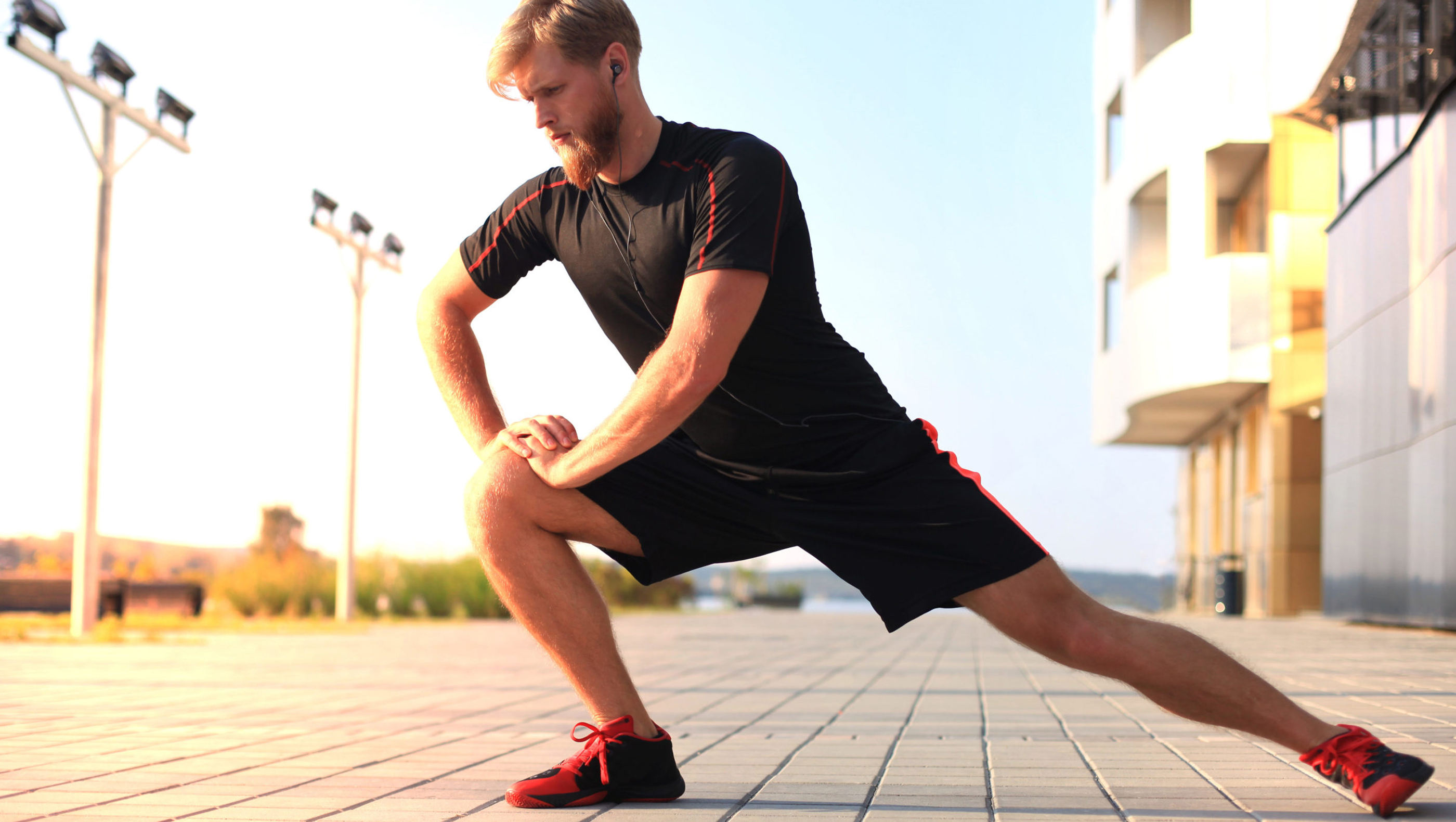
The Centers for Disease Control (CDC) reports that a mere 23 percent of adults are logging the minimum recommendations for weekly exercising.
Set at just 150 minutes (2.5 hours) of cardiovascular aerobic activity and two strength sessions per week, these recommendations are not strenuous. However, with this data making international news headlines at the likes of Fortune and Time, a lack of public education is not likely to blame.
Rather, other factors appear to bear greater influence, and these include gender, socioeconomic status, occupation and even geographic location.
Yet the link between exercise and improved quality of life is undeniable. Exercising is empirically-supported in its contributions to weight loss, sleep, longevity, brain function and appearance, as each of these benefits outlines.
1. Exercising boosts and stabilizes mood.
More than 18 percent of the American population suffers from anxiety disorders. More than 16 percent of adults ages 18 and up suffer from depression.
These statistics from Anxiety and Depression Association of America point to the pervasive issue of mood imbalance and disorder nationwide today.
With both prescription and illicit drug use on the rise, there is one research-supported remedy that delivers known benefits with zero side effects, and that is exercising.
Research demonstrates how physical activity stimulates multiple pathways to change brain chemistry for the better. Vital hormones norepinephrine and serotonin, which can increase after activity, alleviate feelings of depression.
Exercising also boosts the body’s production of endorphins, which promote positive mood, feelings of wellbeing and mental calm, easing anxiety. Moving the body, getting the heart rate up and increasing oxygen intake benefit mood on both a biological and psychological level.
2. Exercising is a natural detoxifier for skin and body wellness.
In the last 12 months alone, more than 18 million people chose to undergo optional (cosmetic) procedures. From invasive surgeries like face lifts and liposuction to minimally or non-invasive procedures like fillers and chemical peels, the compelling drive nationwide to present clear skin and a youthful appearance is undeniable.
To this end, patients reportedly shelled out more than $16 billion dollars to look like they feel their best, even if the underlying reality remains quite different.
There is another, better, safer and more reliable research-supported means of detoxifying the skin and body, boosting blood flow to the skin’s surface, initiating cellular repair and reducing or even delaying the onset of age-related skin lines and wrinkles. That remedy is exercising.
Not only does research show that physical activity guards against oxidative cell damage, but studies also support the role of exercising in stimulating blood flow, circulation and rejuvenation to the skin’s surface.
3. Exercising improves energy levels naturally.
If there is one thing that people today never seem to be able to get enough of, it is energy.
Even though multiple research studies and reports link consumption of energy drinks, which are often high in both caffeine and sugar, to a number of concerning incidents, including trips to the emergency room and high-risk behaviors, the use just continues to increase.
A full 61 percent of millennial adults (born 1981 to 1996) report consuming energy drinks regularly to boost their energy levels – this in spite of data showcasing that 74 percent of millennials are also concerned about the safety of these drinks.
But there is another way to naturally boost energy that not only has no concerning side effects but also brings with it a multitude of other desirable benefits, and that method is physical activity.
The Journal of Sports Medicine reported that sufficient evidence exists linking regular physical activity with energy to justify additional research studies.
In the Journal of Medical Science, Sports and Exercise, a review of available research showed a positive correlation between energy levels and regular physical activity over a 10 to 20 week period for people suffering from chronic fatiguing conditions.
4. Exercising strengthens the muscles and bones.
One of the best-known benefits of exercising regularly is to strengthen and tone the muscles and strengthen the bones.
Not only does this improve appearance, balance and self-confidence, but it also helps to stave off the natural process of aging as well as impede muscle mass loss in individuals with wasting disease.
Maintaining good physical fitness also guards against osteopenia and osteoporosis later in life by creating stronger bones.
5. Exercising supports weight loss and weight maintenance.
Every year, weight loss and improved fitness makes the top 10 list of New Year’s resolutions yet again.
And yet statistics show that after just 30 days, only 25 percent of resolution-setters are still clinging to hope. By year-end, just eight percent report accomplishing any or all of those resolutions.
Inactivity is the number one trigger for weight gain, over and above dietary choices or other lifestyle habits. Where fad diets, severe caloric restriction, supplements and other choices may negatively impact weight loss efforts, exercising delivers clear and consistent results.
Knowing precisely what to do to begin seeing results quickly can potentially improve achievement of weight loss and ideal body weight maintenance.
6. Exercising reduces risk for serious disease later in life.
According to the American Psychological Association (APA), fears about contracting serious illness or disease at some future point can actually promote present-day reductions in quality of life or onset of phobias.
The Journal of Internal Medicine Research (JIMR) reported that cancer, dementia, Alzheimer’s disease, heart disease, heart attack, diabetes, stroke, arthritis and hypertension are the most feared serious diseases among adults today.
Inactivity is strongly correlated with the onset of serious chronic disease later in life, to the point where researchers call them “major killers.”
The data shows that physical inactivity or a sedentary lifestyle can interfere with proper organ function, blood sugar, metabolism, cognitive function, bone and muscle strength and is linked to more than 35 major chronic diseases.
The Journal of Obesity Research highlights how regular exercising can contribute to overall weight loss, especially in the midsection, even without caloric restriction.
As well, a study in the Annals of Internal Medicine found that exercising regularly diminished risk for diabetes and helped stabilize and normalize blood sugar and increase insulin sensitivity.
7. Exercising contributes to cognitive function and memory retention.
More than 50 million people worldwide are affected by some form of dementia, including Alzheimer’s and vascular dementia.
Sadly, popular polls show that many Americans are more afraid of a dementia diagnosis than they are of hearing the news they have cancer, stroke or heart disease.
And yet there is one preventative action that everyone can take that has been proven to guard against all three: physical activity.
Getting the heart rate up, moving the body, improving muscle tone and maintaining weight are all keys to staying healthier. But one unsung hero of exercising is the positive impact on the brain, including overall cognitive function and memory.
Even more pertinently, exercising produces measurable improvement in the brain’s ability to resist Alzheimer’s onset.
8. Exercising promotes improved sleep quantity and quality.
The National Sleep Foundation (NSF) reports that a full 45 percent of adults do not get enough sleep at night on a regular basis.
NSF’s expert guidance continues to suggest that adults need a full seven to nine hours of sleep per night. Children, tweens and teens need even more.
With use of sleep aids on the rise nationwide, experts continue to caution that chemical sleep is not the equivalent of natural restful sleep.
However, there is a remedy that can promote natural, restful, nightly sleep of both sufficient quality and quantity. That remedy is physical activity. In one comprehensive review of available research literature linking physical activity and sleep, the data was compellingly clear: the two are naturally linked.
In one exciting more recent study, researchers discovered that following just the minimum current recommended weekly fitness routine (150 minutes of aerobic activity and two strength-training sessions) improved sleep outcomes in study participants by 65 percent.
For those who suffer from chronic insomnia that has not responded positively to other remedies, another research study highlighted how exercising regularly over a 15-week period improved sleep outcomes over those of the control group.
9. Exercising helps to control chronic pain conditions.
According to the NIH Fact Sheets, chronic pain is so common among adults today it accounts for more complaints annually than do cases of cancer, diabetes or heart disease.
Chronic pain is so widespread data from the Centers for Disease Control (CDC) indicates it may be the most commonly reported reason for seeking medical care. Affecting up to 40 percent of adults, chronic pain is closely tied to long-term disability, opioid abuse, anxiety, depression and poor overall quality of life.
One known effective aid to easing chronic pain is exercising. A summary of research data published by the NIH indicated that regular ongoing physical activity can have a positive impact on quality of life by reducing chronic pain.
Exercising has also been shown to improve tolerance to pain and can even be effective as its own type of treatment to remedy physical pain.
10. Exercising delays the natural aging process.
Preventative Medicine recently reported exciting research that regularly exercising is one of the ways to keep telomere length from shrinking as people age (longer telomeres is now equated to longer life).
But perhaps most promisingly for individuals who have resisted exercising and are now trying to resist the aging process itself, Cell Journal research shows that improving physical fitness at any age is likely to deliver the same degree of benefits when it comes to looking and feeling younger for even longer.
If you are a patient ask your healthcare provider about a customized WebExercises Program designed specifically for you.
The WebExercises Story: Created by Clinicians for Clinicians
We understand the challenges that clinicians face on a daily basis: lack of patient engagement, high drop-out rates, time-crunched clinicians. We developed a solution for you and your patients that provides you with great clinical education, efficient and evidence-based exercise programming, and an engaging patient experience . To find out more how WebExercises can improve your practice call us 866-411-4825 or visit webexercises.com.

